|
Thursday, August 6, 2015
Butterfly Gardening
I get a number of questions about creating a garden area that will attract butterflies. The types of flowers that
attract butterflies will also attract many of our pollinators too. There has been a lot of press about declining pollinator
species including the all important honeybee. You may think that they are only important for pollinating food crops,
but what provides them food when these crops are not in bloom? By providing plants in your landscape that bloom at different
times or have a long season of bloom, you will help provide food to sustain pollinators year round, attract beneficial insects
that can help with pest control, and also get to enjoy the butterflies and maybe a humming bird. Look for an area
in your yard that gets plenty of full sun. Ideally, it will have some shrubs nearby that will provide butterflies a
resting place in the shade and protection from predators and rain. You might already have a landscape bed that fits
these criteria. Having a water source close by is also desirable. The water source can be as simple as a shallow
bowl with some rocks for landing to drink. Change the water every day or so. A thriving butterfly garden should
have a good mix of butterfly nectar and larval (caterpillar) host plants so that butterflies will be attracted to your garden
for food, and they will also have plants to lay eggs on. So you will provide a location for the entire butterfly life cycle
to occur. Butterflies, eggs, caterpillars, and chrysalis can all be found in a good butterfly garden. Nectar plants
usually attract a variety of butterflies, but larval plants are very specific to one or two species of butterfly. Also,
choose flowers with a variety of colors and plant them in groupings of at least three of each species. Use flowers with
a variety of shapes; tubular and daisy like. Butterflies feed by sipping nectar with a straw like proboscis. There
has been some concern about plants sold in nurseries that have had pesticides applied to them prior to sale. These pesticides
could possibly harm butterflies or their developing larvae. This is especially true if the pesticide is a systemic one
that moves into all areas of the plant including nectar and pollen. I would ask pesticide usage before purchasing plants
for a butterfly garden. Some good plants to use in your butterfly garden are milkweed, pentas (especially red), salvia,
coreopsis, blanket flower, rosinweed, ironweed, blue porterweed, verbena, yarrow, and native lantana. Milkweed is a
nectar plant for most butterflies, but is also the larval host plant for both the Monarch and Queen butterflies. If
you have a fence or a sturdy trellis, consider planting a purple passionflower vine or a corkystem passionflower vine.
Both of these vines are larval hosts of the Florida state butterfly Zebra Longwing along with Julia and Gulf Fritillary butterflies.
Several herbs; parsley, dill and fennel, are the larval hosts for several species of swallowtail butterflies.
Be prepared for the butterfly caterpillars (larvae) to strip leaves from the larval host plants as they feed and grow getting
ready to go into the chrysalis stage prior to morphing into butterflies. The University of Florida publication "Butterfly
Gardening in Florida" (http://edis.ifas.ufl.edu/pdffiles/UW/UW05700.pdf ) contains a very complete listing at the end of the publication of nectar and larval host plants specific for each species
of butterfly. Using native plants if available is desirable and has the advantage of providing the plants the butterflies
evolved with. Native plants usually need less water and fertilizer and can also attract beneficial insects that will
help control pest insects. You might notice from the lists of host plants in publications that some plants that we commonly
consider weeds are larval host plants too, so consider leaving a few of them for the butterflies. Once your plants are
in the ground, mulch the bed well with an organic mulch to help retain moisture and keep down weeds. Be very cautious
with pesticides near butterfly larval host or nectar plants. Butterflies are insects and most pesticides are broad spectrum
and will kill butterflies along with any pest insects. Pesticides containing Bt (Bacillus thuringiensis)
are especially dangerous to the larval stage because it specifically kills caterpillars. There are predators of butterfly
larvae too. You could see wasps fly in and carry off caterpillars to use as food for their developing young or birds
preying on caterpillars to feed their young. There are a number of websites with very good information about butterfly
gardening and identifying butterflies that visit your garden. The "Gardens with Wings" site is not specifically
for Florida, but contains good information. Gardens with Wings: http://www.gardenswithwings.com/index.html Butterfly Garden Basics: http://gardeningsolutions.ifas.ufl.edu/schoolgardens/school_gardens/butterfly_garden.shtml#comp MOSI Outside Butterfly Gardening Guide: http://lepcurious.blogspot.com/p/start-butterfly-gardening.html There are also several books that contain good information as well: - "Florida
Butterfly Gardening: A Complete Guide to Attracting, Identifying, and Enjoying Butterflies of the Lower South" by Marc
C. Minno
- "Your Florida Guide to Butterfly Gardening: A Guide for the Deep South" by Janet C. Daniels
-
"Gardening for Florida's Butterflies" by Pamela F. Traas
And one book to help you identify the
butterflies that visit your garden: - "Florida's Fabulous Butterflies" by Thomas
Emmel and Brian Kenney
All pictures are from various University of Florida photographers.
Friday, March 27, 2015
Poviding for Wildlife
A friend of mine shared an article about the importance of planting native trees and plants to help provide
for feeding baby birds. Insects that are used to feed baby birds evolved along with the native plants and the birds.
If the entire landscape is planted with foreign derived plants, the insects, especially their larvae that feed on the native
plants, will not be available to feed the growing birds. This led me to consider writing this article.
You might not think it is important to provide for wildlife
especially if you live near a preserve or conservation area. However, Pinellas County is very densely populated (3,347
people per square mile) leaving very little open natural space for wildlife. By wildlife, I do not mean just larger
animals like deer, bobcats, and coyotes. We need to consider birds, butterflies and other small creatures as well.
Bees and other pollinators have gotten a lot of press lately too. One reason postulated about the decline in bees is
the decline in natural sources of nectar plants. The way that we manage our yards and neighborhoods can affect the wildlife present. If each resident provided
some native habitat for wildlife it would greatly increase the biodiversity of the whole neighborhood and could have a good
impact on the surrounding habitat in the preserve or conservation areas. Unfortunately, the conservation areas are separated
from each other by houses and landscapes. If each of us planted some areas with native plants and reduced pesticide
use we could provide a corridor to connect the conservation areas and also the preserve so that animals would be able to travel
from one natural area to another. Be cautious
about planting invasive, exotic plants or allowing them to grow in your landscape. They outcompete and destroy native
habitat when they escape your yard. Brazilian pepper, air potato, Chinese tallow, and sword fern are examples of invasives
growing in Pinellas County. What you do in your own yards does affect the nearby wildlife populations. We can
all do a lot to provide wildlife 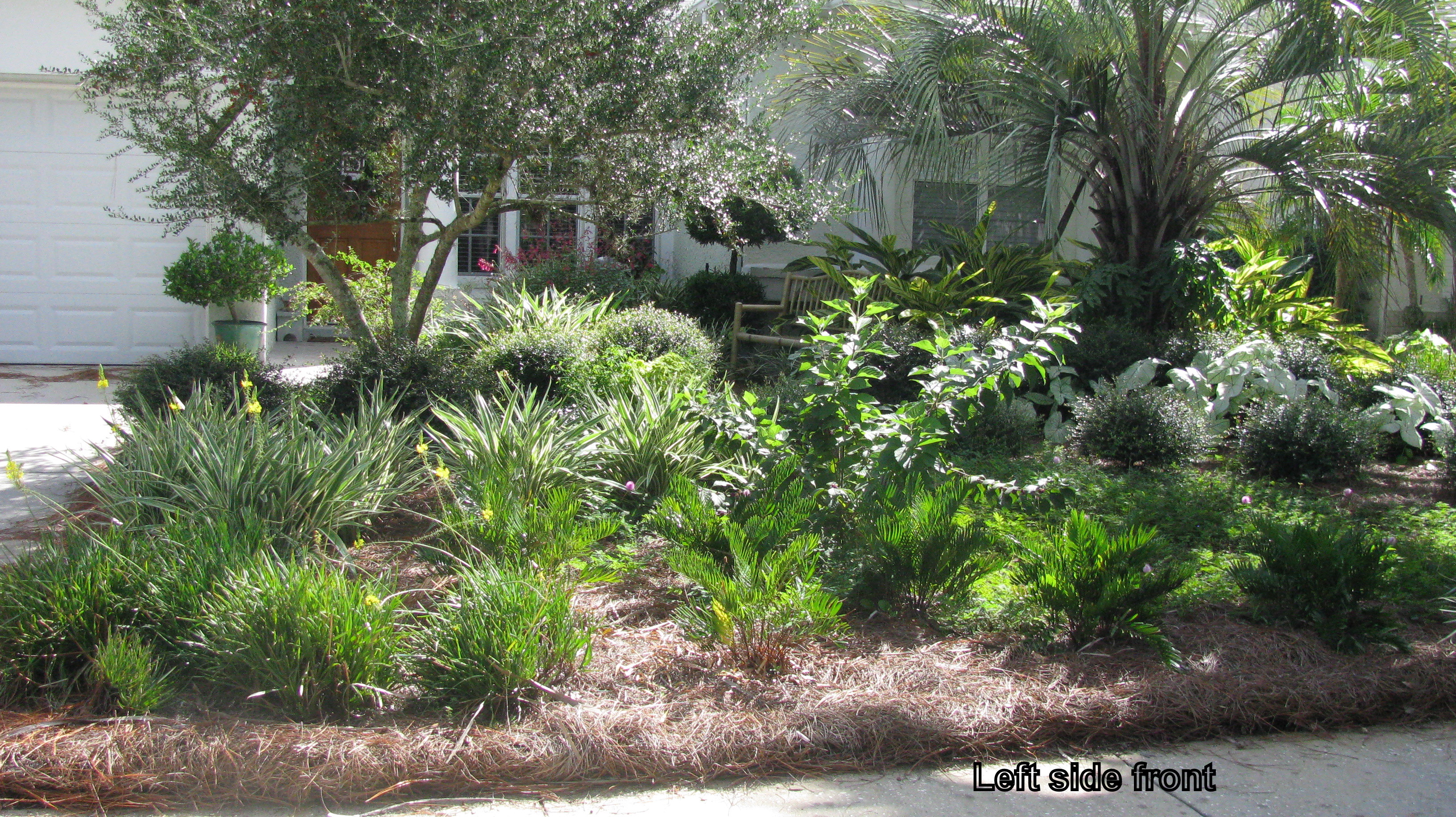 habitat. Essentially, wildlife habitat consists
of food, shelter, water, and space. It is best to provide plants that produce
fruit and seeds to feed the wildlife. If we provide unnatural food sources, wildlife can become unhealthy and possibly
die prematurely. This is especially true of wild animals. There are several things that we can do in our landscapes to help wildlife flourish: -
Provide food. Select plants (preferably Florida native) with seeds, fruit, foliage, or flowers
that butterflies, insects, birds, and other wildlife like to
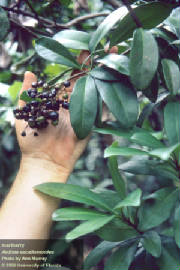 eat. There are a number of plants that provide nectar rich flowers, berries, fruits and seeds. eat. There are a number of plants that provide nectar rich flowers, berries, fruits and seeds. - Reduce insecticide use. Every time insecticides are used on your lawn or landscape plants, you reduce
insect populations, which provide an important food source for birds and other small critters.
- Reduce
the amount of mowed lawn area. Planting low-traffic areas with a variety of groundcovers instead of grass can provide
more potential food sources and habitat for wildlife. My pet Black Racer snake lives in my groundcover front yard. Consider
only having lawn grass in areas that are needed for children and pets to play.
- Increase
vertical layering. Use plants with varying heights and sizes together to provide cover and more feeding opportunities
for diverse species of wildlife. This also provides more opportunities for birds to build nests.
- Supply
water. All water features will attract wildlife if the water is not treated. A natural water source like a pond or
creek is nice, but a fountain or birdbath will also attract wildlife. Be sure to clean a birdbath every few days by scrubbing
the surfaces with a brush. It is best not to use soap or bleach. Also, be sure to change the water every couple of days to
discourage mosquito growth.
- Manage pets. Some pets
will kill wildlife if left outside unsupervised. Dogs and cats are natural hunters. If you allow your pets
to kill wildlife, you will negate any efforts you make toward attracting wildlife. This is especially true for cats allowed
outdoors. In Pinellas County, it is against the law to leave cats outside. Scientists estimate
that domestic cats kill hundreds of millions of birds and possibly more than a billion small mammals each year.
Information for this article was gleaned from the University
of Florida publication; Landscaping Backyards for Wildlife: Top Ten Tips for Success (http://edis.ifas.ufl.edu/uw175) The University
of Florida has publications with more information on this subject: Landscaping for Wildlife
http://www.wec.ufl.edu/extension/landscaping/ Florida Backyards for Wildlife program http://www.wec.ufl.edu/extension/landscaping/fblw/ Using Native Plants http://livinggreen.ifas.ufl.edu/landscaping/using_native_plants.html Gardening for Birds http://gardeningsolutions.ifas.ufl.edu/giam/fyn/florida_friendly_yards/bird_gardening.html Butterfly Gardening in Florida http://edis.ifas.ufl.edu/pdffiles/UW/UW05700.pdf
Tuesday, February 24, 2015
Plants Dangerous to Pets
Every once in a while I find an article that I have written that needs repeating. If you have pets, this one could
be of importance to you. We have a new puppy, so I was interested in what plants that we have in our house and landscape
that could cause a problem for Hannah. There are some plants that we use in our Florida landscapes that can
be deadly if consumed by 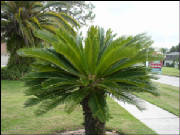 pets; azaleas, cycads or sago palms, and oleanders. Others can make animals sick. We are usually familiar with
the Dieffenbachia or dumb cane dangers since they affect humans too. Chewing on this plant can lead to suffocation because
the Calcium Oxalate crystals in the plant tissues cause the throat to swell. But, there are many more common plants
that are used in the landscape and as house plants that can cause distress for our pets. Some of the common plants are aloe,
amaryllis, caladium, peace lily, calla lily, elephant ears, philodendron, antherium, and pothos. Cats are particularly sensitive
to lilies like amaryllis, daylily and crinum. Other plants that we use in our landscapes that can be toxic include; dracaena,
kalanchoe, hydrangea, lantana, yucca and iris. Even tomato plants are toxic. The Veterinary Pet
Insurance Company's list of top 10 plant poisoning claims includes fruits and plant parts. While raisins and grapes caused
the most problems along with some other edibles, many of our familiar plants are on the list. -
Number 4 is Lily - the poisonous component for cats has apparently not been identified,
 even ingestions of very small amounts of a lily plant could result in severe kidney damage. even ingestions of very small amounts of a lily plant could result in severe kidney damage. - Number 7 is Sago
Palm - All parts are poisonous, but the seeds contain the largest danger. The ingestion of just one or two seeds can result
in vomiting, diarrhea, depression, seizures and liver failure.
- Number 9 is Azalea - ingestion of a few leaves can
result in serious effects that typically occur within a few hours after ingestion, and can include acute digestive upset,
excessive drooling, loss of appetite, frequent bowel movements/diarrhea, colic, depression, weakness, loss of coordination,
stupor, and leg paralysis.
- Number 10 is Hydrangea - ingesting parts of this plant can result in a gastrointestinal
disturbance with vomiting, depression, and diarrhea.
If you have pets and also have any of these problem
plants, use common sense. If your pet does not usually chew on plants, then it shouldn't be a problem. If you
have a dog or cat that likes to dig, then Amaryllis, caladiums, and other bulbs may not be appropriate for your landscape
since they might dig them up and decide to chew on them. You could consider removing the toxic plants or fencing the
area off to the pet. Several of the plants I listed are also used as house plants and that could create a problem.
Sometimes animals, especially dogs, which are bored, will chew just for the fun of it. If you choose to keep the plants,
familiarize yourself with the symptoms that a pet may show if they ingest one of these plants and seek help immediately if
your pet shows any of these symptoms. This list is not complete. If you are concerned about any plants, do some
research at the library or on the Internet. The ASPCA web site has comprehensive searchable information about plants that
are toxic or non-toxic to pets: https://www.aspca.org/pet-care/animal-poison-control/toxic-and-non-toxic-plants . If you still have questions consult with your veterinarian.
Monday, December 15, 2014
Alternative Holiday Plants
My all time favorite holiday plant is amaryllis and I have seen many
in stores that 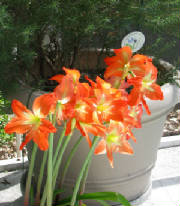 are just putting up their bloom stalks. But, holiday
cactus, cyclamen, kalanchoe, red or white begonias and impatiens, even a topiary rosemary tree are also popular choices.
When choosing plants with blooms, look for those with only a few blooms open and plenty of buds, healthy foliage and a compact
form. For amaryllis, look for plants with the bloom stalk part way up and the bud well formed. Be cautious if you purchase
an amaryllis in one of the prepackaged boxes, be sure to open the box to see if the bulb has already sprouted a bloom stalk
that is twisted inside the box. These bloom stalks will not straighten, so only choose those with bulbs that are not
sprouted or are just beginning to sprout.  The most crucial tip for keeping these plants looking
good through the holidays is proper watering. Make sure that the pot containing the plant has bottom drainage holes.
Plants in small containers can dry out quickly, so you should check them daily. Put your finger in the soil, if the
top inch is dry it is time to water. Over watering is just as bad is under watering and plants do not like to sit in
water. If they come in a decorative foil or plastic wrapper covering the pot, take it off or punch holes in it, then
water them and let them drain well before placing it on a water proof container to protect your table tops. The most crucial tip for keeping these plants looking
good through the holidays is proper watering. Make sure that the pot containing the plant has bottom drainage holes.
Plants in small containers can dry out quickly, so you should check them daily. Put your finger in the soil, if the
top inch is dry it is time to water. Over watering is just as bad is under watering and plants do not like to sit in
water. If they come in a decorative foil or plastic wrapper covering the pot, take it off or punch holes in it, then
water them and let them drain well before placing it on a water proof container to protect your table tops. Keep
blooming plants in cooler temperatures to preserve the blooms longer. Cyclamen prefer very cool temperatures, so if
you place them in a protected area 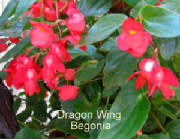 outside over night when no frost is predicted, the blooms will
last longer. Be sure to bring them inside in the morning before any sun reaches the plants. The other plants listed
should be placed in areas with high levels of bright light but no direct sun. Also, keep them out of drafts; either
cold from a door or in front of air-conditioning or heating vents. After the holidays, all of
the mentioned plants except the cyclamen can be added to your landscape. I call Amaryllis the Florida tulip, the bulbs
will thrive and multiply in well drained soil in a site with morning sun and some dappled afternoon shade. I plant several
in large pots so that I can protect them from hungry deer. They bloom around March or April every year. The bulb 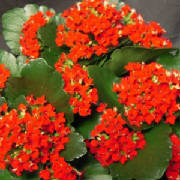 that is forced to bloom at Christmas will not
bloom the first spring it is planted but should reward you for years after. Begonias and impatiens do very well in our
winter landscapes. Impatiens need frost protection and can become deer candy, so containers might be the best idea for
these plants also. Kalanchoe is perennial in our area and enjoys full sun and well drained soil. Rosemary planted
in the landscape can become a small shrubby bush and will provide fresh rosemary for culinary uses year round.
Color for the Fall and Winter Landscape
Annuals are especially versatile during fall and winter adding wonderful
color to our Florida landscapes. We are fortunate that many different flowers will flourish and bloom here as the days
grow shorter cooler and shorter. Some of the annuals available now are alyssum, begonia,
geraniums, impatiens, carnation, calendula, dianthus, gerbera daisy, dusty miller, and marguerite daisy. You can also
find traditional winter annuals like pansies, petunias, delphinium and snapdragons. There are beautiful chrysanthemums
available too. Chrysanthemums are technically perennial plants, but I treat them as annuals since they never seem to
look as good the next year for me. When you purchase chrysanthemums for fall color, choose plants covered with buds
just beginning to open for the longest period of blooms. If you want to try planting seeds, try alyssum, calendula,
nasturtium and sweet peas. In most of the US many of these are spring flowers, but we are fortunate to be able to plant
these in the fall here - in fact they will do much better here in the fall when days are balmy and nights are cool.
Our sandy soil is basically infertile, so add plenty of organic material (peat or compost) and a slow release
balanced fertilizer formulated for flowers as you plant. Dig these amendments into the planting area well. This
should insure that your flowers create a lovely display. Be sure to give each plant plenty of room to grow. This
will allow for good air circulation and fewer disease problems. Always water well when planting and continue to water
daily for a week thereafter. Then weekly watering should be sufficient. You may need to add more slow release
fertilizer in two months to keep them healthy and looking good into the spring. Remove spent blooms periodically to
insure a continuous bounty of flowers. 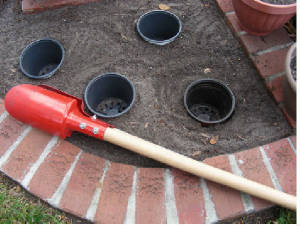  The University of Florida Extension
advocates pot-in-pot planting as a novel alternative to planting the flowers directly into the soil of a flower bed.
With this method you will plant empty nursery pots up to the top edge into the soil of the flower bed. Mulch and any
herbicide can be applied before the plants are added. You will just drop in the plants you have chosen pot and all into
the empty pots. This arrangement allows for a quick change of flowers with the change in seasons. The flowers
in these pots will need water more often and you will only need to fertilize the pots and not the whole bed. In addition,
during the winter any cold tender annuals can be lifted out and moved to a protected location if a frost or freeze is predicted.
There are usually fewer pest and disease problems as temperatures cool. Lower humidity and less rain
can decrease fungal problems. However, powdery mildew can develop when nights are cool and humidity is high for a few days,
and insect pests can still pop up. Scout your flowers often and treat as soon as you see evidence of pests. Powdery
mildew can be treated with Neem oil or a chemical fungicide, just be careful to read and follow the label carefully.
Neem will also control many of the insect pests. However, you will need to use a Bt product like Thuricide for caterpillars. Remember also that Impatiens are deer candy. So, if you want
to plant them, you might consider hanging baskets. Some of these plants are frost sensitive. Impatiens,
geraniums and begonias will need some cover if a heavy frost is expected. With careful planning and care, you should
have colorful flowers well into spring. For additional information, access the University of Florida/IFAS Extension
publication Bedding Plants: Selection, Establishment
and Maintenance on the Internet at: http://edis.ifas.ufl.edu/pdffiles/MG/MG31900.pdf. Pictures from University of
Florida/IFAS
|

